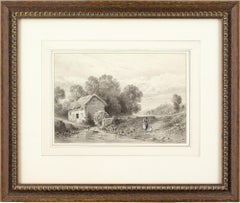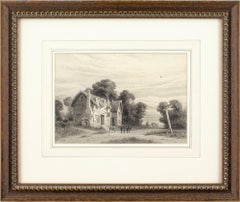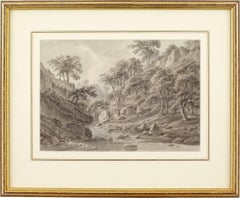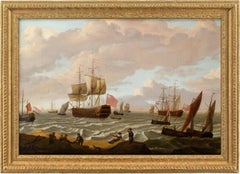Want more images or videos?
Request additional images or videos from the seller
1 of 13
UnknownWalter Hancock’s Enterprise Steam Omnibus, 19th-Century Hand-Coloured Lithographc. 1850
c. 1850
$529.59List Price
About the Item
- Creation Year:c. 1850
- Dimensions:Height: 23 in (58.42 cm)Width: 26 in (66.04 cm)
- Medium:
- Movement & Style:
- Period:
- Condition:Artwork presents well. One minor tear towards the top.
- Gallery Location:Cheltenham, GB
- Reference Number:1stDibs: LU2328211675402
About the Seller
5.0
Gold Seller
Premium sellers maintaining a 4.3+ rating and 24-hour response times
Established in 2017
1stDibs seller since 2023
249 sales on 1stDibs
Typical response time: 1 hour
Authenticity Guarantee
In the unlikely event there’s an issue with an item’s authenticity, contact us within 1 year for a full refund. DetailsMoney-Back Guarantee
If your item is not as described, is damaged in transit, or does not arrive, contact us within 7 days for a full refund. Details24-Hour Cancellation
You have a 24-hour grace period in which to reconsider your purchase, with no questions asked.Vetted Professional Sellers
Our world-class sellers must adhere to strict standards for service and quality, maintaining the integrity of our listings.Price-Match Guarantee
If you find that a seller listed the same item for a lower price elsewhere, we’ll match it.Trusted Global Delivery
Our best-in-class carrier network provides specialized shipping options worldwide, including custom delivery.You May Also Like
HMS Warspite 50 Guns, English antique naval sailing ship aquatint print
Located in Melbourne, Victoria
'HMS Warspite 50 Guns', English English naval aquatint, with gum arabic highlights, by Edward Duncan after Nicholas Condy. Published by Ackermann & Co.
'Warspite' was built and lau...
Category
Early 1900s English School Landscape Prints
Materials
Lithograph
Grapes, English antique botanical fruit food chromolithograph print, 1924
Located in Melbourne, Victoria
Grape Varieties - 'Mrs Pince's Muscat, Royal Muscadine, Chasselas Vibert, Foster's Seedling, Mrs Pearson, Gros Maroc'.
Early 20th century fruit chromolithograph, from Horace Wright'...
Category
1920s English School Still-life Prints
Materials
Lithograph
$60
H 10.63 in W 7.09 in
Chow and Pekinese (Pekingnese), Cecil Aldin 1930s puppy dog lithograph
Located in Melbourne, Victoria
'Chow and Pekinese' (Pekingnese)
Cecil Aldin dog lithograph, 1935.
Cecil Aldin was a British artist and illustrator best known for his paintings and sketches of animals, sports, an...
Category
1930s English School Animal Prints
Materials
Lithograph
Pekingnese, Chow and Spaniel, Cecil Aldin 1930s puppy dog lithograph
Located in Melbourne, Victoria
'Pekingnese, Chow and Spaniel'
Cecil Aldin dog lithograph, 1935.
Cecil Aldin was a British artist and illustrator best known for his paintings and sketches of animals, sports, and ...
Category
1930s English School Animal Prints
Materials
Lithograph
Ibiza Hound puppy, Cecil Aldin 1930s puppy dog lithograph
Located in Melbourne, Victoria
'Ibiza Hound puppy'
Cecil Aldin dog lithograph, 1935.
Cecil Aldin was a British artist and illustrator best known for his paintings and sketches of animals, sports, and rural life....
Category
1930s English School Animal Prints
Materials
Lithograph
HMAS Australia. Rowland Langmaid vintage signed naval ship etching print
By Rowland Langmaid
Located in Melbourne, Victoria
'HMAS Australia'
Signed in pencil by the artist below the image.
Rowland Langmaid was a marine painter and etcher who studied under William Lionel ...
Category
1930s English School More Prints
Materials
Etching
$730
H 9.26 in W 14.77 in
The Old Road: Elegy for the English Elm I, Robin Tanner signed artist etching
By Robin Tanner
Located in Melbourne, Victoria
The Old Road: Elegy for the English Elm I
Etching by Robin Tanner (1904-1988), signed by the artist in pencil.
Very good, strong impression with excellent contrast. From the editio...
Category
1970s English School Landscape Prints
Materials
Etching
$1,350
H 12.8 in W 10.24 in
Full Moon, Robin Tanner signed artist etching
By Robin Tanner
Located in Melbourne, Victoria
Full Moon
Etching by Robin Tanner (1904-1988), signed by the artist in pencil.
Very good, strong impression with excellent contrast. From the edition issued in 1977.
Robin Tanner’...
Category
1970s English School Landscape Prints
Materials
Etching
Plan of the Park, Garden and Plantations of Goodwood, 18th century engraving
By Colen Campbell
Located in Melbourne, Victoria
Plan of the Park, Garden and Plantations of Goodwood in Sussex the Seat of his Grace the Duke of Richmond and Lenox &c
Copper-line engraving with later hand-colouring by Hendrik Hul...
Category
18th Century English School Landscape Prints
Materials
Engraving
$450
H 21.26 in W 27.56 in
Modern Pair of Oriental Numbered and Signed Etching
Located in Roma, IT
1970s Pair of black and white important numbered and signed etching.
Japan 1973.
Every item of our Gallery, upon request, is accompanied by a certificate of authenticity issued by S...
Category
1970s Modern More Prints
Materials
Paper, Lithograph
More From This Seller
View AllEdmond Albert Joseph Tyrel de Poix, Landscape With Watermill, Mother & Child
Located in Cheltenham, GB
This charming 19th-century drawing by British artist Edmond Albert Joseph Tyrel de Poix (1840-1916) depicts a mother and child standing by a mill pond before a rustic watermill.
De Poix was a gentleman artist descended from French nobility...
Category
1870s English School Landscape Drawings and Watercolors
Materials
Pencil, Paper
Edmond Albert Joseph Tyrel de Poix, Landscape With Pub & Signpost
Located in Cheltenham, GB
This charming 19th-century drawing by British artist Edmond Albert Joseph Tyrel de Poix (1840-1916) depicts a timber-framed public house, figures, horses and a leaning signpost.
De ...
Category
1870s English School Landscape Drawings and Watercolors
Materials
Pencil, Paper
Amos Green, Near Ingleton, Yorkshire
Located in Cheltenham, GB
This fine early 19th-century watercolour by British artist Amos Green (1735-1807) depicts an asperous gorge near Ingleton in Yorkshire.
On either side of a shallow river, trees clin...
Category
Early 1800s English School Landscape Drawings and Watercolors
Materials
Watercolor, Ink, Paper
Dominic Serres The Elder RA (Circle) Two British Men-O'-War Among Other Vessels
Located in Cheltenham, GB
This splendid mid-18th-century oil painting depicts a marine scene with numerous British and Dutch vessels, including two impressive ‘Men-O’-War’. It’s comparable to the oeuvre of Anglo-French painter, Dominic Serres RA (c.1722-1793).
The rich British tradition of marine painting is representative of Britain’s naval power during the 18th century. Such was the dominance of Britain’s navy that paintings such as this were in high demand by patrons, particularly by the landed gentry. These drama-filled ensembles were influenced by the earlier Dutch painters such as Ludolf Backhuysen...
Category
18th Century English School Landscape Paintings
Materials
Canvas, Oil
Edward Robert Smythe, Figures & Horses On A Beach With Buildings
By Edward Robert Smythe
Located in Cheltenham, GB
This late 19th-century oil painting by English artist Edward Robert Smythe (1810-1899) depicts a picturesque bay with buildings, fishing boats, figures and horses. Smythe was a maste...
Category
1880s English School Landscape Paintings
Materials
Oil, Canvas
Mid-18th-Century English School, Portrait Of A Girl With A Posy
Located in Cheltenham, GB
This exceedingly charming mid-18th-century English oil painting depicts a girl wearing a red gown with a train over a white petticoat. She’s holding a posy or nosegay.
Evidently once commissioned for an English country house, the identity of this young lady remains a mystery. Her gown appears to be inspired by the popular ‘robe à la française...
Category
1740s English School Portrait Paintings
Materials
Oil, Canvas
Recently Viewed
View AllMore Ways To Browse
Antique Boilers
Antique Trundle
Steam Boilers
Bus Seats
Chow Chow Dog
Civil Rights Posters
Damien Hirst Rainbow
Jim Dine Saw
Lithograph By Bruce
Martin Engelbrecht
New Orleans Poster
Picasso Lithograph 1967
Pin Up Girl Art
Rome Travel Poster
Vintage Pin Up Art
Vintage Renaissance Art
Vintage Tennis Print
Vintage Vegetable Posters



